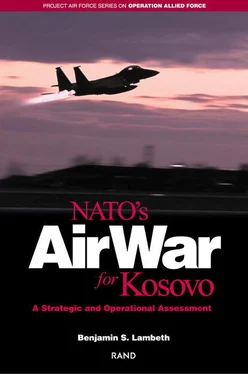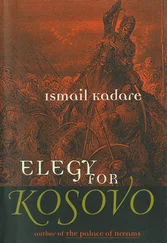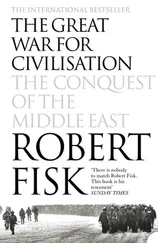ON THE USES AND ABUSES OF AIR POWER
Viewed in hindsight, the most remarkable thing about Operation Allied Force is not that it defeated Milosevic in the end, but rather that air power prevailed despite a NATO leadership that was unwilling to take major risks and an alliance that held together only with often paralyzing drag. Lesson One from both Vietnam and Desert Storm should have been that one must not commit air power in “penny packets,” as the British say, to play less-than-determined games with the risk calculus of the other side. Although it can be surgically precise when precision is called for, air power is, at bottom, a blunt instrument designed to break things and kill people in pursuit of clear and militarily achievable objectives.
To admit that gradualism may be the wave of the future for any U.S. involvement in coalition warfare is hardly to accept that it is any more justifiable from a military point of view for that reason alone. Quite to the contrary, the incrementalism of NATO’s air war for Kosovo, right up to its very end, involved a potential price that went far beyond the loss of valuable aircraft and other expendables for questionable gain. It risked frittering away the hard-earned reputation for effectiveness that U.S. air power had finally earned for itself in Desert Storm after more than three years of unqualified misuse over North Vietnam a generation earlier.
As the Gulf War experience showed, and as both Deliberate Force and Allied Force ultimately reaffirmed, U.S. air power as it has evolved since the mid-1970s can do remarkable things when employed with determination in support of a campaign whose intent is not in doubt. Yet to conjure up the specter of “air strikes”—NATO or otherwise—in an effort to project an appearance of “doing something” without a prior weighing of intended effects or likely consequences is to run the risk of getting bogged down in an operation with no plausible theory of success. After years of false promises by its most outspoken prophets, air power has become an unprecedentedly capable instrument of force employment in joint warfare. Even in the best of circumstances, however, it can never be more effective than the strategy it is intended to support.
This study has benefited from insights gained from conversations with numerous participants in Operation Allied Force, including Admiral James Ellis, Jr., USN, commander in chief, Allied Forces Southern Europe and Joint Task Force commander, Operation Noble Anvil; General John Jumper, USAF, former commander, United States Air Forces in Europe and now U.S. Air Force chief of staff; Lieutenant General Michael Short, USAF (Ret.), former commander, Allied Air Forces Southern Europe and Joint Force Air Component Commander, Operational Noble Anvil; Vice Admiral Daniel Murphy, Jr., USN, commander, 6th Fleet; Captain Dave Maxwell, USN, director of operations, and Captain Tony Cothron, USN, director of intelligence, 6th Fleet; Lieutenant General Charles Wald, USAF, former deputy director, J-5, Joint Staff and now commander, 9th Air Force; Major General (select) Dan Leaf, former commander, 31st Air Expeditionary Wing at Aviano Air Base, Italy, and now director of operational requirements, Hq USAF; Air Chief Marshal Sir John Day, RAF, the UK Ministry of Defense’s director of operations during Allied Force and now commander in chief, RAF Strike Command; Air Vice Marshal Andrew Vallance, RAF, former chief of staff, NATO Reaction Force (Air); Major General P. J. M. Godderij, deputy commander in chief, Royal Netherlands Air Force; Captain C. J. Heatley, USN (Ret.), former commander, Joint Warfare Analysis Center; Colonel Jeff Eberhart, commander, and Lieutenant Colonel Ray Dissinger, deputy commander, 31st Operations Group, Aviano Air Base, Italy; and Lieutenant Colonel Steve Schraeder, commander, 510th Fighter Squadron at Aviano.
I am also indebted to Major General Eitan Ben-Eliahu, then–commanding officer of the Israeli Air Force (IAF), who invited me to brief the highlights of an earlier version of this book and to receive feedback from the entire senior IAF leadership at a special roundtable session convened during his weekly staff meeting at IAF headquarters in Tel Aviv in October 1999. In addition, I acknowledge Thomas Henriksen, associate director of the Hoover Institution at Stanford University, who organized a seminar for me at Hoover in April 2000, attended by Hoover’s military fellows and former Secretary of Defense William Perry, to critique an earlier draft of this study; Major General Gary Dylewski, then-commander, and Colonel Bob Bivins, then–director of operations, Air Force Space Warfare Center, for having briefed me on the contribution of space systems to Operation Allied Force; General Patrick Gamble, commander, and Lieutenant General (select) Thomas Waskow, director of air and space operations, Pacific Air Forces, for sharing their insights into the Allied Force experience; Major Marshall Denney, USMC, Tactics Division, Marine Aviation Weapons and Tactics Squadron 1, for describing some of the highlights of EA-6B operations; Major General Leroy Barnidge, former commander, 509th Bomb Wing and later vice commander, 9th Air Force, for his observations on B-2 employment during Allied Force; and Loren Timm of Lockheed Martin Corporation for providing me with useful material on F-16 operations.
Most important in this respect, I thank General Gregory Martin, commander, United States Air Forces in Europe, for having put the extensive USAFE Air War Over Serbia (AWOS) data collection at my complete disposal, and Lieutenant Colonel Richard Sargent, director, operations studies and analysis, Hq USAFE, and Edward Ballanco, Hq USAFE, for carefully vetting the penultimate draft of this study and helping me to make the most of the unclassified documentation that General Martin made available to me. I also thank Captain John Wilbourne, 492nd Fighter Squadron, RAF Lakenheath, England, for his special effort to put me in touch with both individuals and resources at Lakenheath with a direct connection to 48th Fighter Wing operations during Allied Force.
Beyond this direct research support, I am grateful to Brigadier General Dan Darnell, commander, 31st Fighter Wing, for having provided me an opportunity to fly on a Block 40 F-16CG laser-guided bomb delivery training mission out of Aviano to sample at first hand the challenge of 100-percent target identification from medium altitude, as well as other operational problems associated with Allied Force; Lieutenant General Wald for having arranged a Block 50 F-16CJ SEAD mission orientation for me with the 20th Fighter Wing at Shaw AFB, South Carolina; General Martin, USAFE’s commander, for having allowed me to fly on an F-15E Kosovo-type strike training mission into the Scottish highlands with the 48th Fighter Wing, RAF Lakenheath, England; and Lieutenant General Fred McCorkle, USMC, deputy commandant for aviation, Hq United States Marine Corps, for his support in enabling me to get a first-hand exposure to Marine F/A-18D operations during two ground-support training sorties with Marine All-Weather Fighter/Attack Squadron 332 at MCAS Beaufort, South Carolina. This hands-on familiarization with some of the principal mission employment practices used in Operation Allied Force was uniquely helpful in informing my characterization of those practices in this assessment.
Finally, for their helpful comments on all or parts of an earlier draft, I acknowledge General W. L. Creech, USAF (Ret.); General Jumper; Air Chief Marshal Day; Lieutenant General Short; Lieutenant General Bruce Carlson, USAF, director, J-8, Joint Staff; Lieutenant General Ronald Keys, commander, 16th Air Force; Lieutenant General John Dallager, former DCS/Operations, SHAPE, and now superintendent, U.S. Air Force Academy; Air Vice Marshal Tony Mason, RAF (Ret.); Lieutenant General (select) Lance Smith, commander, and Colonel Steve Carey, Lieutenant Colonel Russ Barnes, and Major Richard Leatherman, Hq Air Force Doctrine Center; Major General David Deptula, director, USAF Quadrennial Defense Review; Major General (select) Leaf; Brigadier General Robert Bishop, deputy director of operations, Hq United States Air Force; Brigadier General Darnell, Colonel Eberhart, and Lieutenant Colonel Dissinger of the 31st Fighter Wing at Aviano; Colonel Charles Westenhoff, USAF, director, Joint SEAD Joint Test Force; Colonel Wesley Jarmulowicz, USMC, formerly assigned to AFSOUTH J-5 and now commander, Marine Aircraft Group 31; Colonel Robert Owen, USAF, Hq Air Mobility Command; Professor David Mets, School of Advanced Airpower Studies, Air University; Robert Haffa and Barry Watts, Northrop Grumman Analysis Center; Mark Butler and Daniel Harrington, Hq USAFE; Bob Johnston and Major Mike Pietrucha, Hq USAF; and my RAND colleagues Nora Bensahel, Tom Hamilton, Ted Harshberger, Steve Hosmer, Dave Kassing, Rob Mullins, Bruce Nardulli, David Ochmanek, Bruce Pirnie, Carl Rhodes, John Stillion, and Alan Vick. I am additionally indebted to Emily Rogers for her deft assistance with composition and formatting and to Miriam Polon for her invariably sure editing. My special thanks go to Ivo Daalder of the Brookings Institution and Alan Gropman of the Industrial College of the Armed Forces for their careful and constructive reviews of the final product.
Читать дальше












